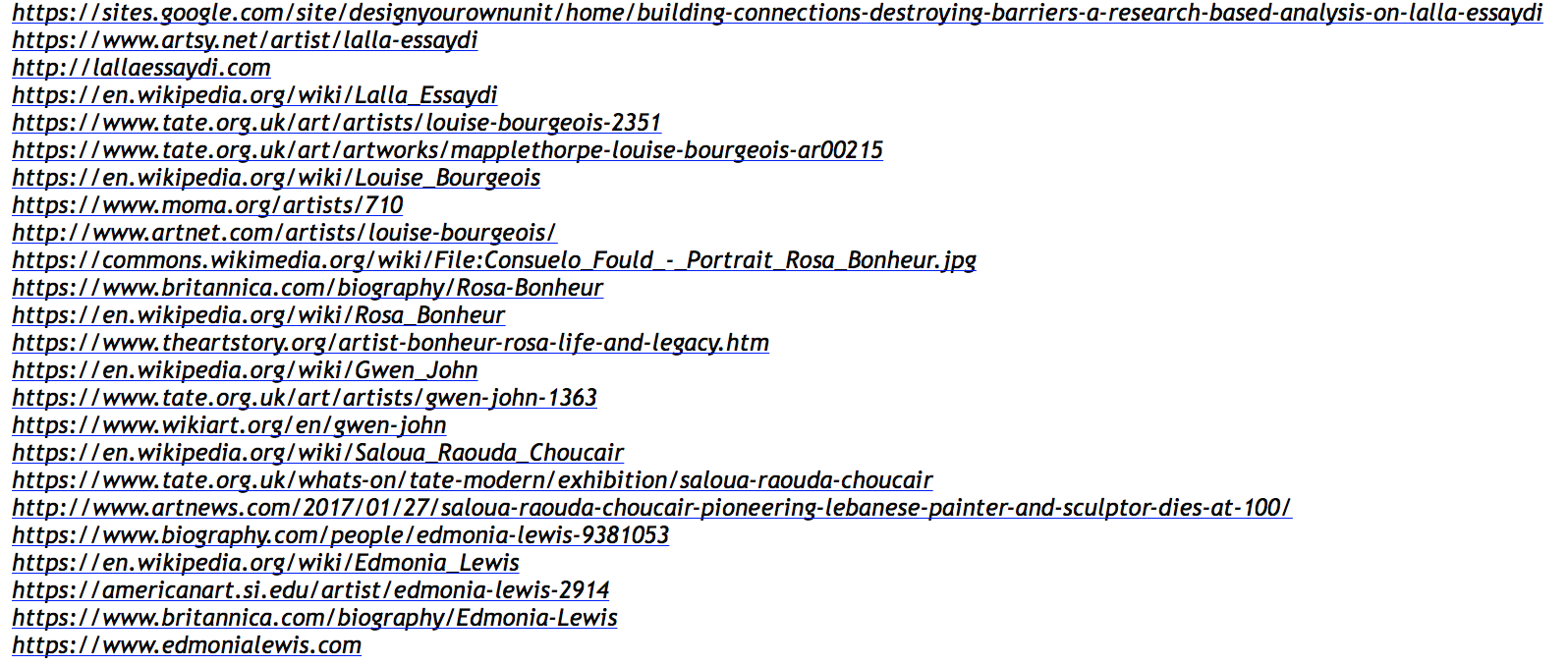Homage to all the women for Women History Month ✨
There are so many incredible and talented women artists in the world and in the History of Art, yet it doesn't seem that they are always being highlighted as much as their male counterparts. When studying History of Art A Level, it is questionable whether enough women artists and their input in Art History are included in the teaching. Furthermore, there are women from the #MENASA region that have been overlooked, who's input in art should not be.
This needs to change ✨ and is changing thanks to the amazing women, people, some institutions in the world changing that! ✨✨☮️
To celebrate women artists this month and in answer to "Where's Our Art History?", Art Breath is putting up an ongoing database to highlight the incredible women artists by sketching their portrait in homage to them and writing a part of their bio up on Art Breath.
We will also be placing “Artists Cards” which are prints of the women's portraits with their bios, around places and establishments so that people who wouldn’t necessarily read up on women’s achievements, may come across these cards and get a chance to find out more.
This is an ongoing project and we will keep adding women! Next project: women designers, pioneering women, women in tech...✨✨✨
#WheresOurArtHistory ItsAlwaysBeenHere check out all the amazing people working towards this
#5WomenArtists @womeninthearts ✨✨✨
Have a look below and in part II at the list of women artists (in no particular order) that will keep growing!
Lubaina Himid CBE
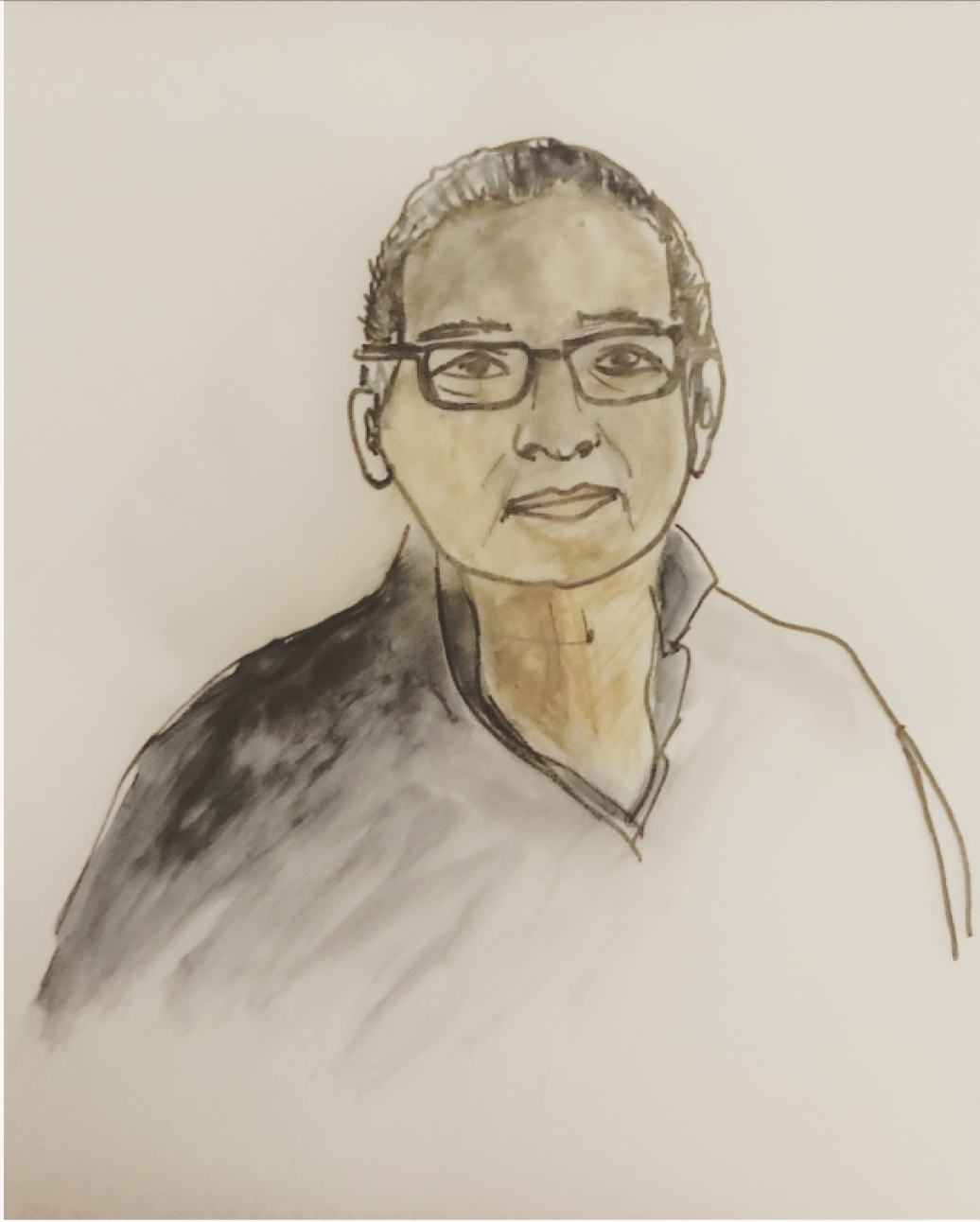
Born in Tanzania, Himid moved to the UK at a very young age, where she later studied Theater Design at Wimbledon College of Art and did a Master's degree in Cultural History at the Royal College of Art in 1984. She is a painter, a cultural activist and a Professor of contemporary art at the University of Central Lancashire in the north-west of England. Himid is the first Black woman to win the Turner Prize in 2017. She was a leading figure of the Black Arts Movement in the 1980s and has curated numerous shows which promoted Black Artists in UK galleries. Her work celebrates Black creativity and the people of the African Diaspora, as well as look into cultural contributions that have been neglected or overlooked. Lubaina Himid challenges the lack of visibility there is of African artists in Institutions and the need there is for diverse representation in the media and the Arts. Himid represented Britain at the 5th Havana Biennale and her work can be found at the Tate, the Victoria & Albert Museum, The Whitworth Art Gallery and many other public Institutions. In 2010 she was awarded an MBE and in 2018 was recognized in the Queen’s Birthday Honours list with a CBE.
Lynette Yiadom-Boakye

Lynette Yiadom-Boakye was born in London. She is a graduate of Falmouth College of Arts and has an MA from the Royal Academy Schools. She paints portraits of fictional African American subjects, developing characters beyond time and place with a narrative that projects a feeling of stillness. She has won several awards, including in 2006, the Arts Foundation Award for painting, the Carnegie Prize in 2018 at Carnegie International in Pittsburgh, and was shortlisted for the Turner Prize in 2013. She has exhibited at The Serpentine in 2015 and her work is part of the permanent collection at the Tate in London, the Victoria and Albert Museum in London, the Museum of Contemporary Art in Chicago, The Museum of Modern Art New York and many other institutions.
Rachel Whiteread CBE
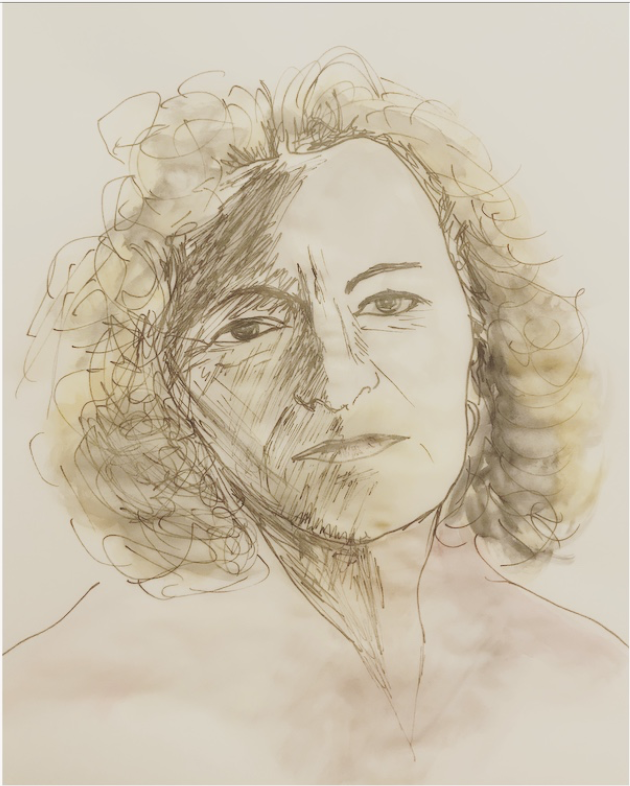
Rachel Whiteread studied sculpture at Slade School of Art, University College, London and was the first woman to win the Turner Prize in 1993. In 1997 she exhibited at The Royal Academy with Saatchi's Sensation exhibition, forming part of the YBAs (The Young British Artists). She is known for using industrial materials such as plaster, concrete, resin, rubber and metal to transform and cast everyday objects as well as architectural spaces, including the 'negative space' that form around an object or around a space. Her artworks include "House" completed in 1993. "House" was a life-sized cast of the interior of a condemned terraced house in London’s East End and the artwork was exhibited at the location of the original house, existing for a few months before it was controversially demolished. Her other works include The Holocaust Monument Memorial a.k.a. Nameless Library in Vienna which is constructed as a an inside-out library and Untitled Monument, her resin sculpture for the empty fourth plinth in London's Trafalgar Square. In 2006 Rachel Whiteread was appointed a CBE.
Bridget Riley CH CBE

Bridget Riley was born in London and studied at Goldsmiths College and the Royal College of Art. She is a painter known for ‘Op-art’ where she paints black and white geometric patterns, producing sensations of movement. Op Art creates an optical illusion. In 1965 she exhibited alongside Victor Vasarely and others at the Museum of Modern Art in New York in an exhibition called “The Responsive Eye”, bringing Op-Art to the forefront. In 1967 she delved more into colour which resulted in her painting stripes. She won an International Painting Prize at the Venice Biennale in 1968. Some of her works are held in the collections of The Museum of Modern Art in New York, the National Gallery of Art in Washington, D.C., the Tate Gallery in London and the Peggy Guggenheim Collection in Venice. She has been given honorary doctorates by Oxford in 1993 and Cambridge in 1995. She was awarded a CBE in 1974 and in 1998 she became one of only 65 Companions of Honour in Britain. In 2012 she was the first woman to receive the Sikkens Prize, a Dutch art prize recognizing the use of colour.
Guerrilla Girls
.jpg)
The Guerrilla Girls are a feminist activist group of artists. They preserve their anonymity by wearing gorilla masks in public. Their art aims to expose issues of gender and ethnic biases as well as corruption in the arts. They fight discrimination and promote an inclusive art world for all. They started as a group of seven in the spring of 1985 in response to the Museum of Modern Art's exhibition "An International Survey of Recent Painting and Sculpture" (1984), in which among 165 artists, only 13 women were included. In protest the Guerilla Girls pasted responsive posters throughout downtown Manhattan. They have done over 100 street projects, including pasting posters and stickers all over the world to highlight women's inclusion in art and a more diverse art world. Their work such as "Do Women Have To Be Naked To Get Into the Met. Museum?" ,"Dearest Art Collector" and "You’re Seeing Less Than Half The Picture" challenge institutions behaviours and the status quo.
Frida Kahlo
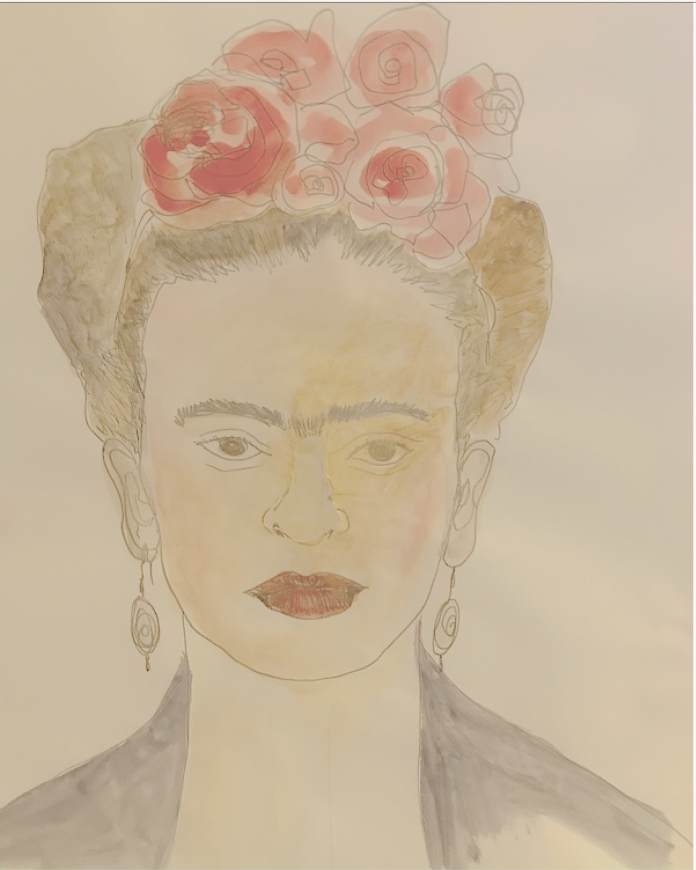
Frida Kahlo was a Mexican artist known for her self-portraits with a surrealist setting. She is celebrated for her depiction of the female experience and her attention to Mexican and the Indigenous culture. She painted in a naïve folk art style, using a lot of symbolism and through her art questioned notions such as identity, postcolonialism, gender and class. She reflected heavily on her own life experiences including her poor health and the traumatic bus accident as a teenager in which a steel handrail impaled her through the hip and her spine and pelvis were fractured. All these experiences, including her marriage to artist Diego Rivera formed part of the subjects she painted. In 1938 she exhibited at New York City gallery and the following year went to show in Paris.
Berthe Morisot

Berthe Morisot was a French painter born in 1841. She was part of the painters in Paris who came to be known as the French Impressionists. 1864, was the first time she exhibited and it was for the highly esteemed Salon de Paris, which was the official annual exhibition of the Académie des Beaux-Arts in Paris. She went on to exhibit in the following six Salons. But in 1874, she joined Paul Cézanne, Edgar Degas, Claude Monet, Camille Pissarro, Pierre-Auguste Renoir and Alfred Sisley and exhibited as part of the "rejected" Impressionists. As Morisot came from an eminent family, she was able to carve a career in art despite the time in which she was born. She married Édouard Manet's brother Eugène Manet. Her paintings depict children, including her own, women and flowers, focusing on domestic and everyday life. In that period, it would have been difficult for her to approach other subjects but it is within her brushstrokes and paint that is found a radical paint style for that époque.
Yayoi Kusama
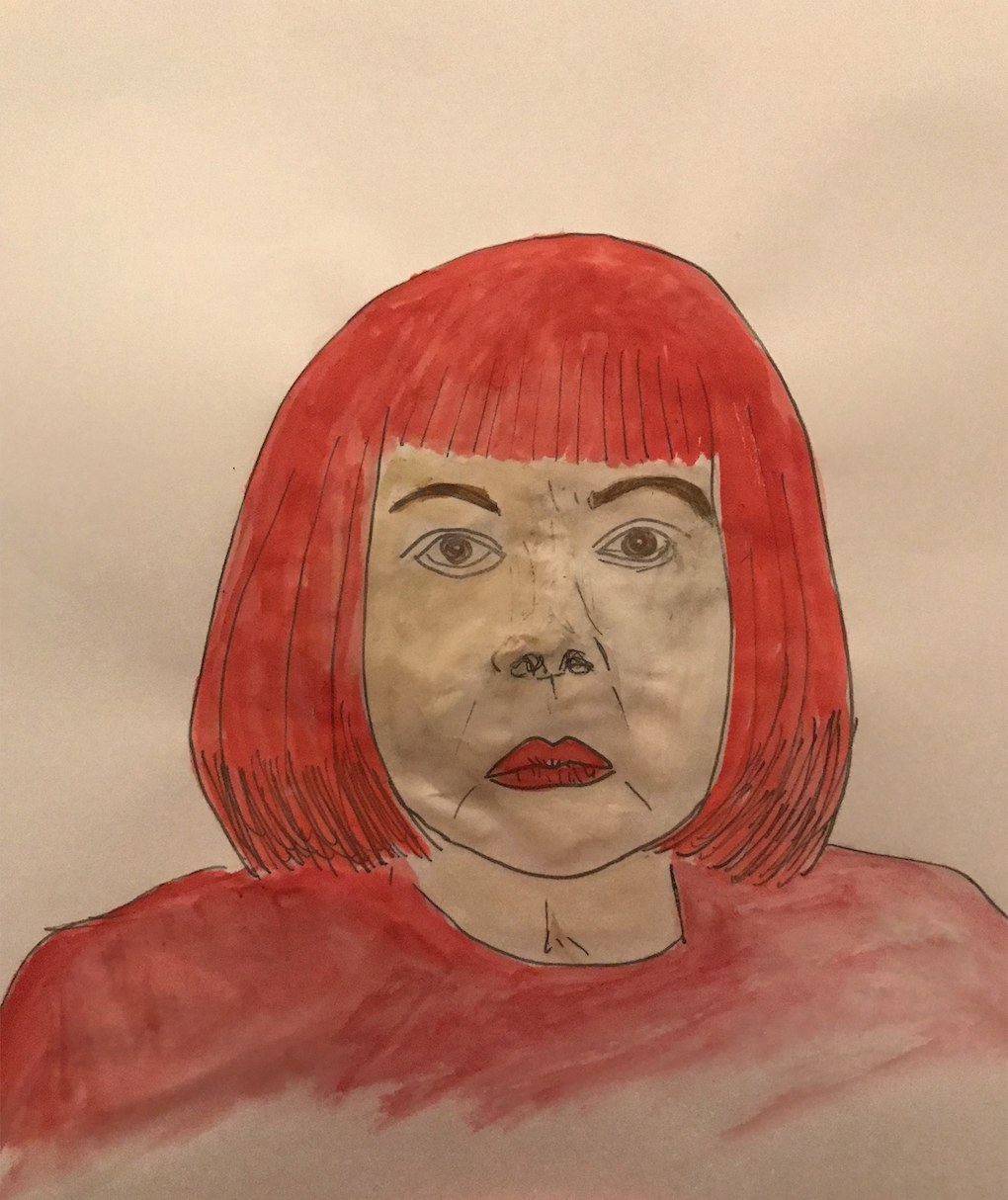

Japanese artist Yayoi Kusama was born in 1929 in Matsumoto City, Japan. She trained in 1948 at the Kyoto School of Arts and Crafts in a traditional Japanese painting style called nihonga but by the 1960s was known for her avant-garde art. Her polka dot motifs, a trademark of her work known as "Infinity Nets" come from hallucinations she has suffered since a child. The Pumpkin form is another motif she is known for and which she sees as self portraits, as the kabocha squash were found in the fields that surrounded her childhood home. Her Mirror/Infinity rooms artwork series are installations, rooms lined with mirrored glass containing many neon-colored balls with polka dot motifs hanging at various heights above the viewer who enter the room. Light reflects off the mirrored surfaces to create the illusion of a never-ending space. In 1966 Kusama first participated in the Venice Biennale and represented Japan in 1993 at the 45th Venice Biennale. After returning to Japan in 1977 from the Unites States where she lived in her twenties, Kusama checked herself into the Seiwa Hospital for the Mentally ill and has by choice resided there ever since. She continues to work and exhibit around the world including at the Centre Pompidou in Paris, Tate Modern London, Whitney Museum of American Art, New York and The National Museum of Modern Art Tokyo, among many other museums.
Tracey Emin CBE RA

Tracey Emin is a British artist who grew up in Margate and gained an MA in 1989 from the Royal College of Art. Alongside Sarah Lucas, in 1993, they opened a shop called The Shop at 103 Bethnal Green Road selling their artworks. That same year, Emin had her first solo show at the White Cube Gallery in London. She was one of the original YBA's (Young British Artists) and exhibited in Saatchi's Sensation Exhibition of 1997, which radically changed the contemporary art scene. Her works such as "Everyone I Have Ever Slept With 1963-1995" (1995) and My Bed (1998)—her own unmade, messy bed installed at the Sensation exhibition and later on the Tate Gallery, as well as her many painting series or neon artworks, depict personal elements of her life and form part of the feminist discourse. Emin was nominated for the Turner Prize in 1999 and was awarded a CBE in 2013. Some of the museums which hold her collections are The Museum of Modern Art in New York, the Tate Gallery in London, and the Goetz Collection in Munich.
Paula Rego DBE RA

Paula Rego is a British and Portuguese artist. She studied at the Slade School of Fine Art, University College London and was an exhibiting member of the London Group along with David Hockney and Frank Auerbach. Her style sways between abstract and representational and her paintings and prints are based on storybooks, reflecting feminist notions and folk-themes from her native Portugal. In 1965 Paula Rego was selected to take part in the show "Six Artists" at the Institute of Contemporary Arts (ICA) London. In 1969, she was the Portuguese representative at the São Paulo Art Biennial and in 1988 had a retrospective exhibition at the Calouste Gulbenkian Foundation in Lisbon, at the Serpentine Gallery in London and one in 1997 at Tate Liverpool. In 1990, she was the first artist-in-residence at the National Gallery in London. Paula Rego's art are found in many institutions including 43 works in the collection of the British Council, ten works in the collection of the Arts Council of England and 46 works at the Tate Gallery, London. In 2010 she was made a Dame.
Artemisia Gentileschi
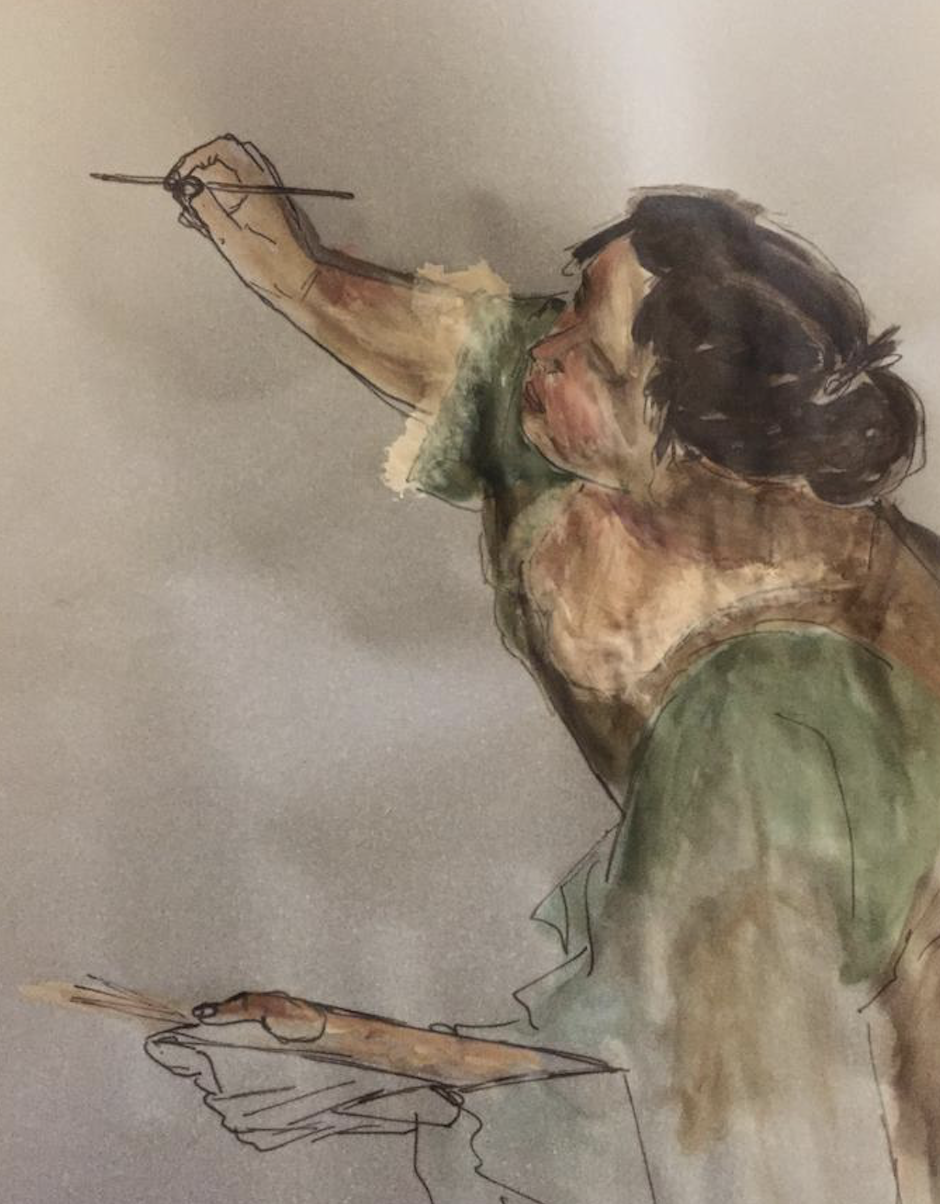
Artemisia Gentileschi was born Artemisia Gentileschi Lomi in Rome around 1590-93. Her father was an Italian painter and she learnt drawing, painting and colour from her father's workshop. She was a Baroque painter and is one of the most celebrated female painters of the 17th century. She was raped by her art tutor and after dashed hopes of them marrying, Artemisia's father pressed charges and took the tutor and painter Agostino Tassito to trial. This whole period of her life probably affected her artworks as well as inevitably her life. She was married off to another fellow artist but did not stop painting. She worked in Rome, Florence, Venice, Naples and London for the highest ranks of European society, such as Philip IV of Spain, enjoyed the patronage of the House of Medici from the Grand Duke of Tuscany and the Grand Duchess Christina of Lorraine. She joined her father at the Court of Charles I of England, and soon King Charles I made Gentileshi's work part of his collection. Artemisia Gentileshi established herself as an independent artist and was the first woman to gain membership to the Academy of the Arts of Drawing in 1616. From 1630 she settled in Naples, where she ran a successful studio until her death.
Tamara de Lempicka
.png)
Tamara de Lempicka was born Maria Górska in Warsaw. She moved to Paris from St Petersburg after marrying and studied at the Académie de la Grande Chaumière with Maurice Denis and then with André Lhote. She was part of what became known as the Art Deco movement and her art was influenced by Cubism and the Neoclassical style. After exhibiting in Paris she was spotted by fashion magazines which propelled her work to be known. One of her best-known works, Autoportrait (Tamara in a Green Bugatti) became in 1929 the cover for the German fashion magazine Die Dame. After successful shows and commissions, following the outbreak of World War II in 1939, Lempicka and her new husband moved to Los Angeles and then to New York. Her work embodies female freedom as well as a unique stylish slick-cubist style.
Mona Hatoum
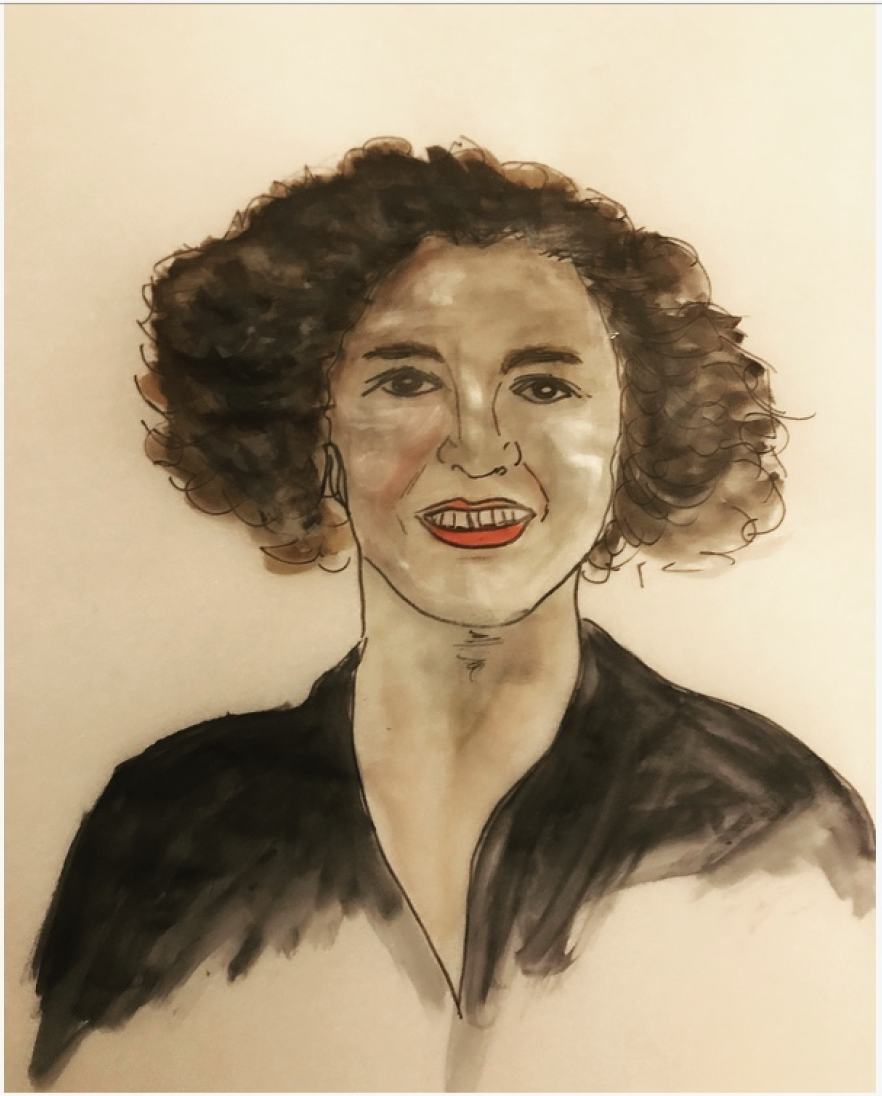
Mona Hatoum was born in Beirut to a Palestinian family and studied graphic design at Beirut University College. After the Civil War broke out in Lebanon, she moved to London. From 1975 to 1981 she studied at the Byam Shaw School of Art and the Slade School of Fine Art (University College, London). Her artworks use installations, sculpture, video, photography and are often used in unconventional ways. Her work looks at identity, politics, gender and family relationships. Her work also looked at the female body, such as "Corps etranger" colour video images of an endoscopic probe of her body. A similar work was shown at Saatchi's Sensation exhibition. Her artwork "Hot Spot" is a large installation piece, a neon lit globe on a tilted angle showcasing that unrest hurts the entire world. She has had solo exhibitions at the Centre Georges Pompidou in Paris, Tate Modern, Museum of Contemporary Art Chicago and New Museum, New York among many others. She participated in the 46th Venice Biennale in 1995 and the 51st in 2005, the 2017 Documenta 14 in both Kassel, Germany and Athens and the 2002 Documenta 11 in Kassel. In 1995, she was nominated for The Turner Prize. In 2011 she received the Joan Miró Prize, in 2017 she was awarded the 10th Hiroshima Art Prize from the Hiroshima City Museum of Contemporary Art, Hiroshima and in 2018 she was awarded the Art Icon from the Whitechapel Gallery.
Shirin Neshat

Shirin Neshat is a contemporary Iranian artist who currently lives in New York. In 1983 she graduated from UC Berkeley. Her artworks influenced by her upbringing in Iran and her years lives in the United States, delve in between Islam and the West, between femininity and masculinity and the cultural complexity of public life and private life as well as antiquity and modernity. Neshat uses photography and film as a medium. Her split-screened video Turbulent of 1998 won her the First International Prize at the Venice Biennale in 1999. She also won the Silver Lion for best director at the 66th Venice Film Festival in 2009. Her photographic work includes Unveiling (1993), where Arabic writing or calligraphy is inscribed onto images. In 2018 she unveiled her portrait of girls’ education activist Malala Yousafzai at the National Portrait Gallery. Her works are included in the collections of the Tate Gallery in London, The Museum of Modern Art in New York, The Tel Aviv Museum of Art and the Walker Art Center in Minneapolis, among others.
Lalla Essaydi
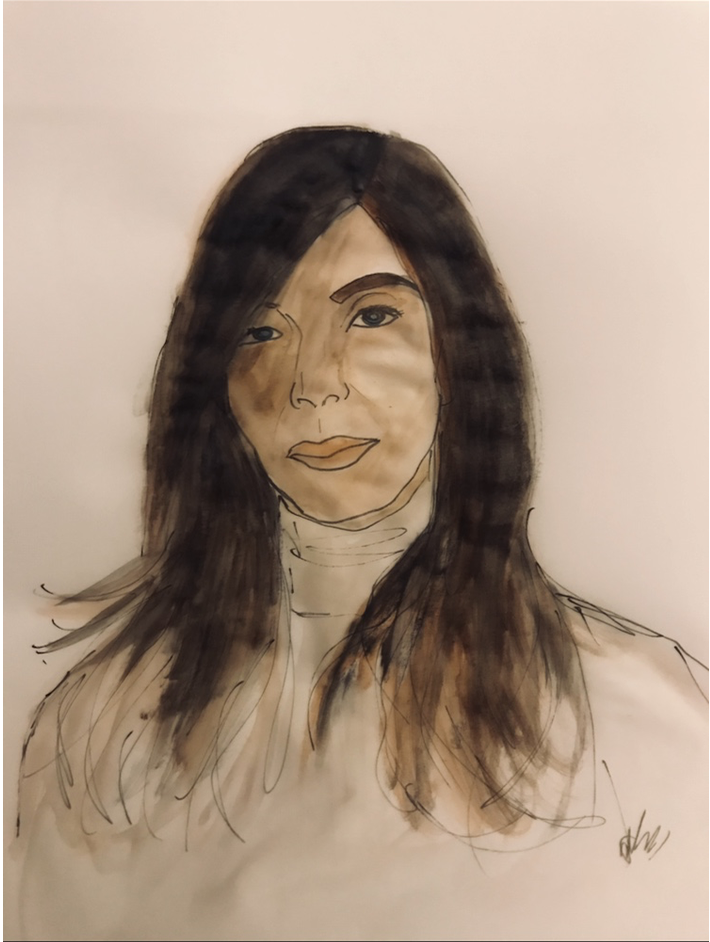
Lalla A. Essaydi was born and grew up in Morocco. She lived in Saudi Arabia and then traveled to Paris to study at the École Nationale Supérieure des Beaux-Arts. Then in 2003 she received an MFA from the School of the Museum of Fine Arts/TUFTS University in the United States where she now resides. She is a photographer and her artworks look at reconsidering or reimagining the Orientalist mythology. Her work revisits architectural spaces from her childhood in Morocco and looks at public spaces that used to only be confined to men, as women were often confined to private spaces. She showcases calligraphy with henna on the female body, thus reshaping the roles men and women were associated with. Her work are in a number of collections such as The Williams College Museum of Art, The Art Institute of Chicago, The Fries Museum, the Netherlands, and The Kodak Museum of Art. In 2012 she received the Medal Award from The School of the Museum of Fine Arts in Boston (SMFA).
Louise Bourgeois
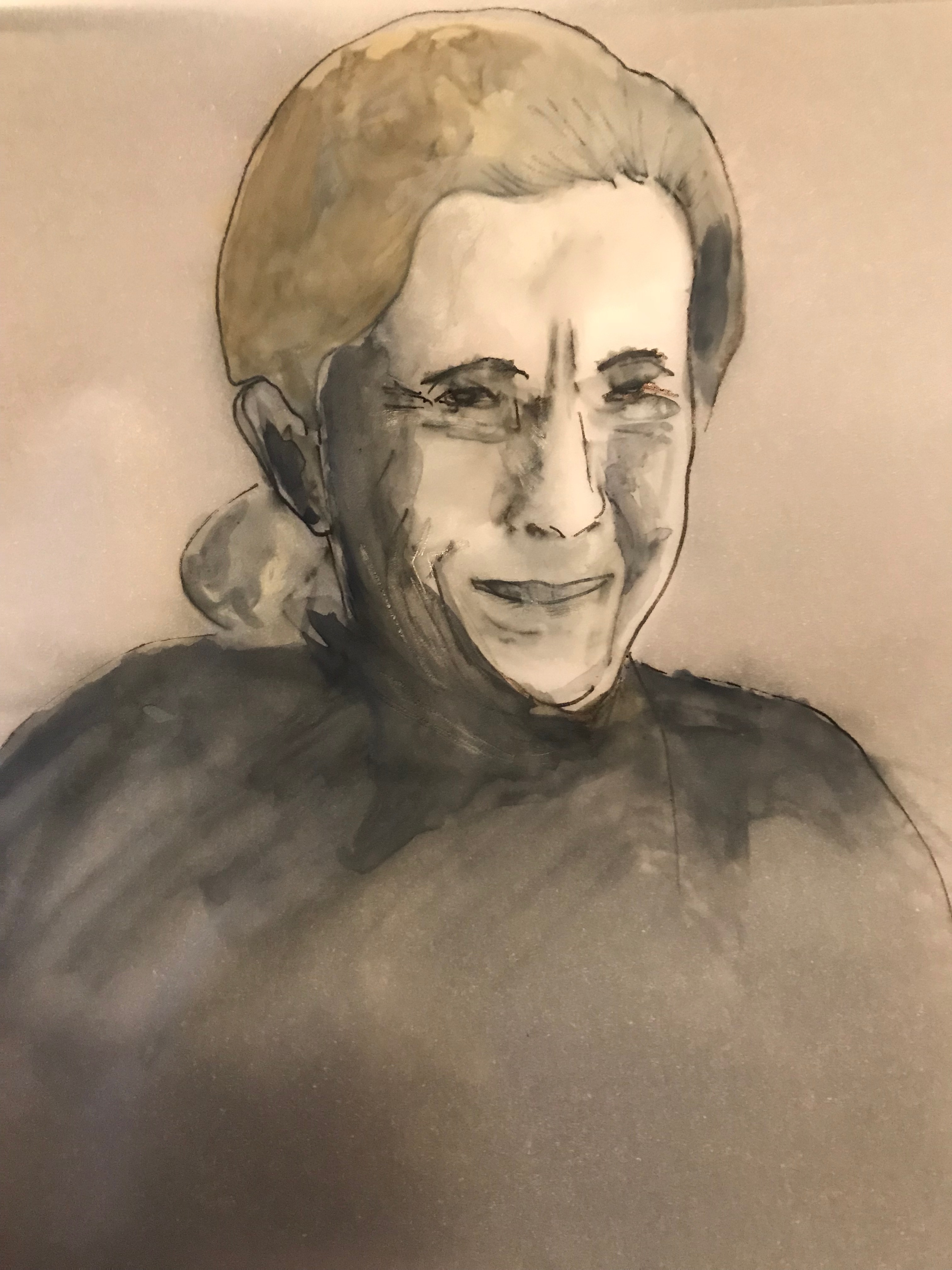
Louise Bourgeois was a French-American artist who produced large scaled installations and sculptures. Her work looks at sexuality, the family, the body and the unconscious. She studied maths at the Sorbonne in the 1930s, but when her mother passed away she moved to art and studied at the École des Beaux-Arts and École du Louvre. And then in the Independent Academies of Montparnasse and Montmartre with André Lhote, Fernand Léger, Paul Colin and Cassandre. She left for New York in 1938 and studied at the Art Students League of New York. Her art dealt with psychological events from her childhood. Through mythological imagery, such as spirals, spiders, cages, medical tools and sewn appendages, she portrayed psychological pain and psyche. Her works such as "Femme Maison" became an example for feminist artists. Her other work "Maman" a huge spider-like sculpture, commissioned for The Unilever Series for Tate Modern's Turbine Hall in 2000, reflects the meaning of spinning, weaving and protection and thus the strength of her or a mother. She started Salons gatherings for young artists and students at her home in New York where they could bring their artworks to be critiqued by her. She collaborated with Tracey Emin and her works are held in the collections of the Art Institute of Chicago, the Whitney Museum of American Art in New York, the Tate Gallery in London, and the Kunstmuseum Basel, among others.
Rosa Bonheur
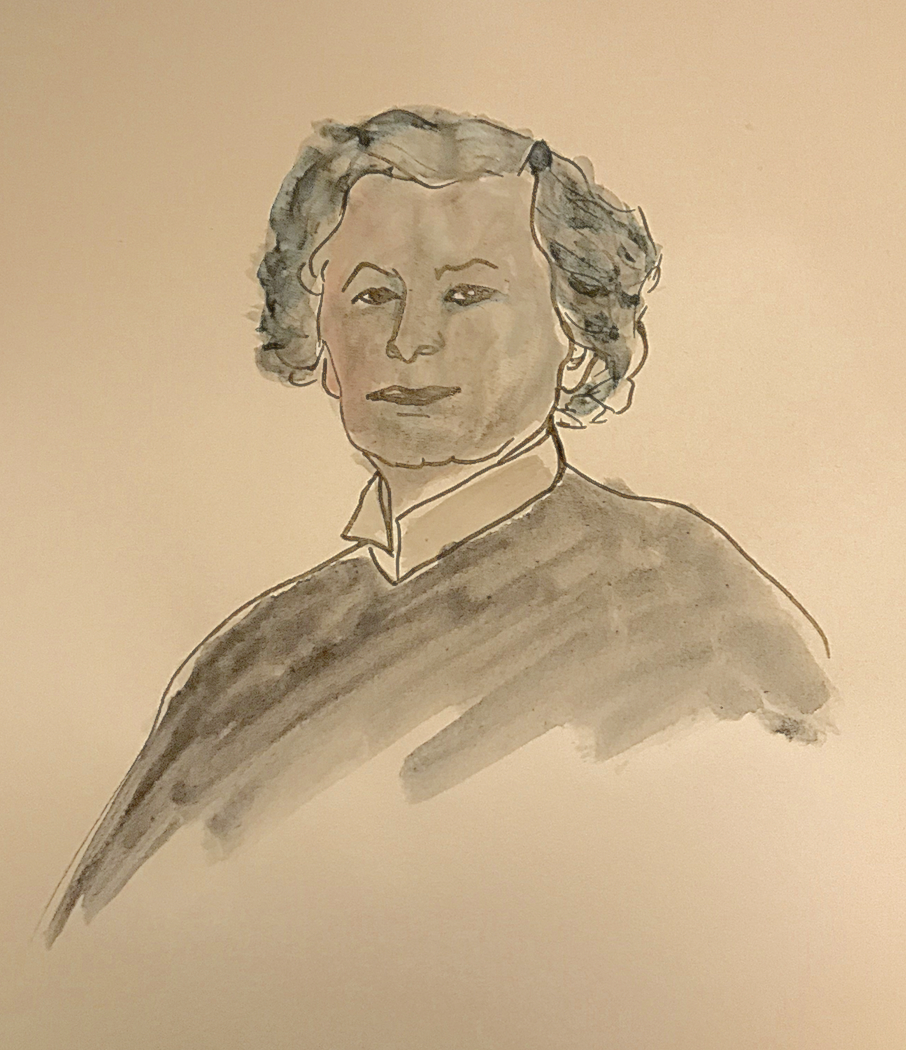
Rose Bonheur born Marie-Rosalie Bonheur was a French artist and is thought of as one of the most famous women artists of the 19th Century. She was a painter of animals in the Realism style as well as a sculptor. Her mother passed away when she was very young and her father a painter himself, encouraged her to pursue art. She exhibited regularly at the Salon from 1841 to 1855, winning exemption from jury approval in 1853. Her renowned painting Ploughing in the Nivernais was first exhibited at the Paris Salon of 1848 and can now be seen at the Musée d’Orsay in Paris. Her other work The Horse Fair was exhibited at the Salon of 1853 and is now in the Metropolitan Museum of Art in New York City. A version of the artwork is in the National Gallery in London. She traveled to Scotland and en route met Queen Victoria who admired Bonheur's work. She was known for wearing men's clothing and was as open as she could be at that time in her personal life, in a same sex relationship. She was the first woman to be awarded the Grand Cross of the Legion of Honour in 1865 and was promoted to Officer of the order in 1894.
Gwen John
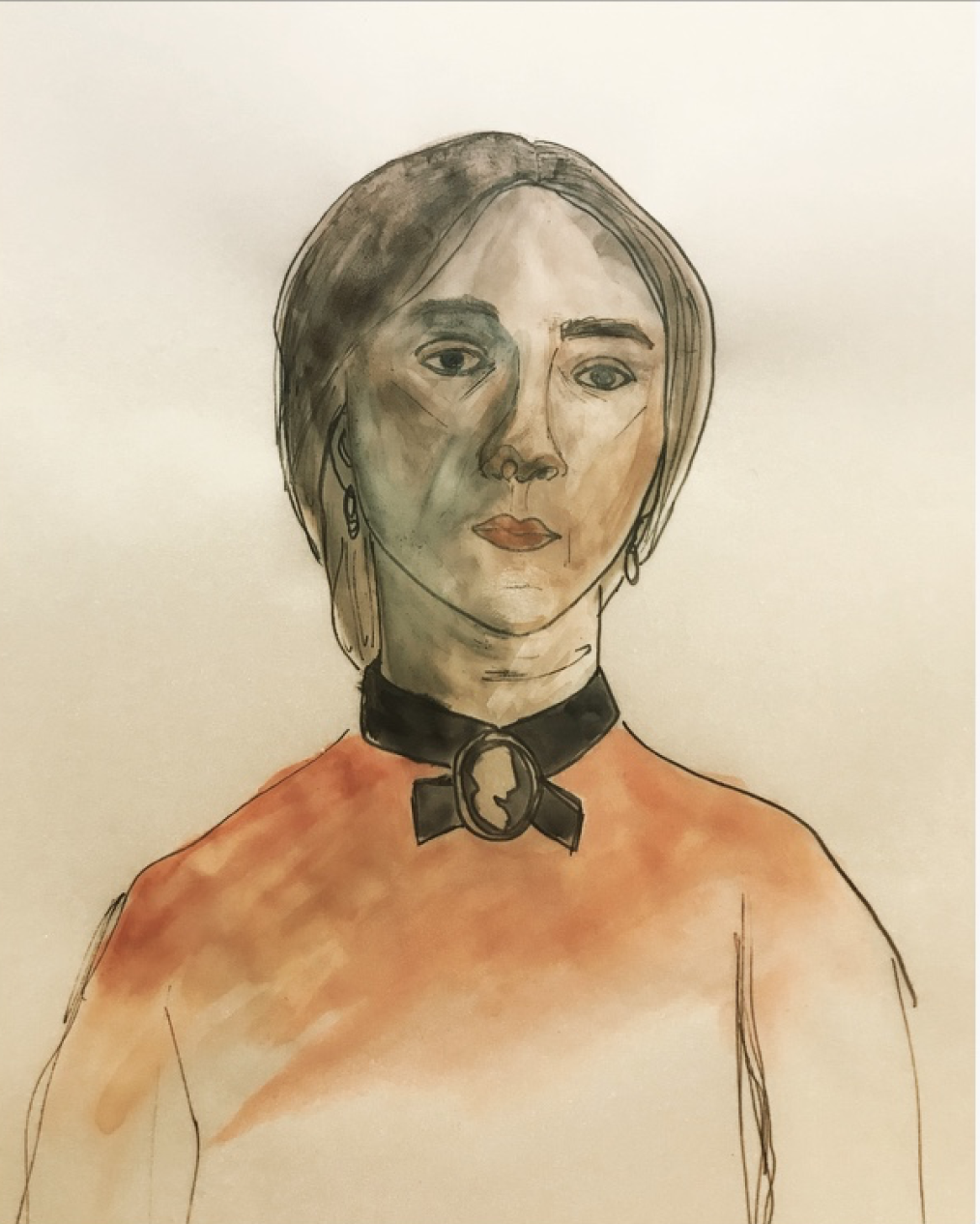
Gwen John was born in Wales and from 1895 to 1898 studied at the Slade School of Art where in her final year she won the Melvill Nettleship Prize for Figure Composition. Her brother Augustus John was also an artist who studied at Slade and often took most of the limelight. In 1898 she left for Paris and while there, studied under James McNeill Whistler at his school, Académie Carmen. Upon returning to London, she exhibited in 1900 her work for the first time at the New English Art Club (NEAC). In 1904 she was back in Paris and became an artist's model, notably modeling for the sculptor Auguste Rodin, upon which she then became his lover. From 1910, John Quinn, an American art collector became a patron of her work and purchased the majority of her works until his death in 1924. In 1913 one of her paintings was included in the Armory Show in New York. Gwen John exhibited in Paris in 1919 for the first time at the Salon d'Automne and then regularly until the mid-1920s. After that time she became reclusive and only had one solo exhibition in her lifetime at the New Chenil Galleries in London in 1926.
Saloua Raouda Choucair

Saloua Raouda Choucair was born in 1916 in Beirut and was a Lebanese painter and sculptor. She started painting in the studios of Lebanese painters Moustafa Farroukh and Omar Onsi. In 1947 she exhibited at the Arab Cultural Gallery in Beirut and it is considered to have been the Arab world's first abstract painting exhibition. The following year in 1948, she left Lebanon for Paris where she studied at the École Nationale Supérieure des Beaux-Arts and attended Fernand Léger's studio. In 1950 she was part of the Salon des Réalités Nouvelles in Paris. She started to focus on sculpture in 1959. She was awarded in 1963 the National Council of Tourism Prize for the execution of a stone sculpture for a public site in Beirut and in 1974, the Lebanese Artists Association sponsored an honorary retrospective exhibition of her work at the National Council of Tourism in Beirut. She won an appreciation prize from the General Union of Arab Painters in 1985 and in 1988 was awarded a medal by the Lebanese government. A retrospective exhibition of her work was organized by Saleh Barakat presented at the Beirut Exhibition Center in 2011 and in 2013, a retrospective of her work was held at The Tate Modern in London. Choucair received a honorary doctorate from the American University of Beirut in 2014. She passed away in 2017 at the age of 100.
Edmonia Lewis

Edmonia Lewis was an American sculptor and was the first woman of African-American and Native American heritage to achieve international fame and recognition as a sculptor in the fine arts world. At the age of nine, both her parents were dead and she had to move with her brother to live with their aunt. After school, she entered the Oberlin College and began to study art. She was met with prejudice and accused of poison and stealing. Despite there being no evidence and was acquitted in court, she was not allowed to graduate. She then moved to Boston in 1864 to become a sculptor. It was not easy finding an instructor until meeting Edward Augustus Brackett. In that same year, she opened her studio to the public for her first solo exhibition. Her art was inspired by the lives of abolitionists and Civil War heroes. When she met Union Colonel Robert Gould Shaw, the commander of an African American Civil War regiment from Massachusetts, she created a bust of his likeness. She eventually moved to Rome and established her own studio space. Edmonia Lewis was supported by Charlotte Cushman, a Boston actress and a friend of the expatriate sculptors in Rome and Maria Weston Chapman, a dedicated worker for the anti-slavery cause. In Italy, she worked in the Neoclassical manner, sculpting in marble keeping the images and themes relating to Black and American Indian people. She was unique in how she sculpted, as she wanted to enlarge her clay and wax models in marble herself, rather than hire native Italian sculptors to do it for her, something most sculptors were doing. Her artwork "Forever Free" depicts an image of an African American man and women emerging from the bonds of slavery and her work "The Arrow Maker" shows a Native American father teaching his daughter how to make an arrow. In 1876, she participated in the Centennial Exposition in Philadelphia and made the marble sculpture "The Death of Cleopatra" which portrayed the queen in the throes of death. In 1877 former US President Ulysses S. Grant commissioned her to do his portrait and sat for her as a model. She also contributed a bust of Charles Sumner to the 1895 Atlanta Exposition. In 1901 she moved to London.
Bibliography:

